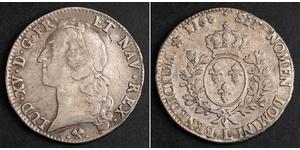[ 5564] SICILY: SYRACUSE, Timoleon and the Third Democracy Bronze Hemidrachm (24mm, 14.45 gm.) 344-339/8 B.C. Reference: CNS 72; SNG ANS 477-88; HGC 2, 1440. Laureate head of Zeus Eleutherios right. Upright thunderbolt; to right, eagle standing right. Provided with certificate of authenticity. CERTIFIED AUTHENTIC by Sergey Nechayev, PhD - Numismatic Expert Timoleon (Greek: Τιμολέων), son of Timodemus, of Corinth (ca. 411–337 BC) was a Greek statesman and general. As the champion of Greece against Carthage he is closely connected with the history of Sicily, especially Syracuse. // Early life When his brother Timophanes, whose life he had saved in battle, took possession of the acropolis of Corinth and made himself master of the city, Timoleon, after an ineffectual protest, tacitly acquiesced while the friends who accompanied him put Timophanes to death. Public opinion approved his conduct as patriotic; but the curses of his mother and the indignation of some of his kinsfolk drove him into retirement for twenty years. Sicily Sicily 431 BC Because of the political problems of Syracuse and the threat from Sparta, a group of Syracusans sent an appeal for help to Corinth which reached Corinth in 344 BC Corinth could not refuse help, though her chief citizens declined the responsibility of attempting to establish a settled government in factious and turbulent Syracuse. Timoleon, being named by an unknown voice in the popular assembly, was chosen by a unanimous vote to undertake the mission, and set sail for Sicily with a few of the leading citizens of Corinth and a small troop of Greek mercenaries. He eluded a Carthaginian squadron and landed at Tauromenium (now Taormina), where he met with a friendly reception. At this time Hicetas, tyrant of Leontini, was master of Syracuse, with the exception of the island of Ortygia, which was occupied by Dionysius, still nominally tyrant. Hicetas was defeated at Adranum, an inland town, and driven back to Syracuse. In 343 Dionysius surrendered Ortygia on condition of being granted a safe conduct to Corinth. Hicetas now received help from Carthage (60,000 men), but ill-success roused mutual suspicion; the Carthaginians abandoned Hicetas, who was besieged in Leontini, and who was then compelled to surrender. Timoleon was thus master of Syracuse. He at once began the work of restoration, bringing new settlers from the mother-city and from Greece generally, and establishing a popular government on the basis of the democratic laws of Diocles. The citadel was razed to the ground, and a court of justice erected on its site. The amphi-polos, or priest of Olympian Zeus, who was annually chosen by lot out of three clans, was invested with the chief magistracy. The impress of Timoleon's reforms seems to have lasted to the days of Augustus. Hicetas again induced Carthage to send (340–339) a great army (70,000), which landed at Lilybaeum (now Marsala). With a miscellaneous levy of about 12,000 men, most of them mercenaries, Timoleon marched westwards across the island into the neighbourhood of Selinus and won a great and decisive victory on the Crimissus. The general himself led his infantry, and the enemy's discomfiture was completed by a blinding storm of rain and hail. This victory gave the Greeks of Sicily many years of peace and safety from Carthage. Carthage made, however, one more effort and despatched some mercenaries to prolong the conflict between Timoleon and the tyrants. But it ended in the defeat of Hicetas, who was taken prisoner and put to death. Carthage then agreed to a treaty in 338 BC by which, in Sicily, Carthage was confined to the west of the Halycus (Platani) and undertook to give no further help to tyrants. Retirement Timoleon then retired into private life without assuming any title or office, though he remained practically supreme, not only at Syracuse, but throughout the island. Notwithstanding the many elements of discord Sicily seems to have been during Timol ...
Mehr...

|
Beigetragen von:
anonymous 2015-08-18 |
Similar Coin Groups
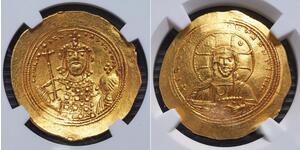
1 Histamenon Byzantinisches Reich (330-1 ...
Diese Gruppe hat 11 Münzen / 8 Preise
Add coin to this group
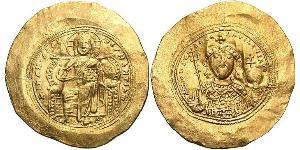
1 Histamenon Byzantinisches Reich (330-1 ...
Diese Gruppe hat 11 Münzen / 7 Preise
Add coin to this group

500 Escudo Republica Portuguesa (1975 - ...
Diese Gruppe hat 2 Münzen / 1 Preise
Add coin to this group
2025-05-23
- New coin is added to 5 Lira Kirchenstaat (752-1870) Silber Pius IX (1792- 1878)
5 Lira Kirchenstaat (752-1870) Silber Pius IX (1792- 1878)
Diese Gruppe hat 17 Münzen / 17 Preise
⇑
PAPAL STATES 5 Lire 1870 R - Silver 0.9 - Pius IX. - VF+ - 2485 *
2025-05-09
- New coin is added to 1 Ecu Kingdom of France (843-1791) Silber Ludwig XV (1710-1774)
1 Ecu Kingdom of France (843-1791) Silber Ludwig XV (1710-1774)
Diese Gruppe hat 14 Münzen / 13 Preise
⇑
1768, Royal France, Louis XV. Large Silver Ecu (French Dollar) Coin. Bayonne! Mint Year: 1768 Denomination: Ecu Mint Place: Bayonne (L) References: Duplessy 1331, KM-512.12. Mint Direc ...
Das könnte Sie auch interessieren:


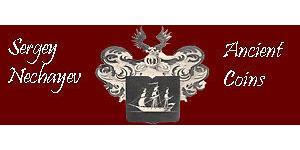







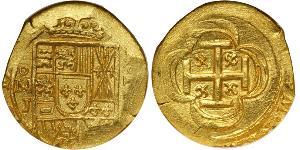
-300-150-h7kKbzbiaoUAAAFPGWGA8IgY.jpg)
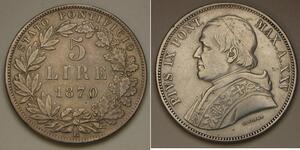
-300-150-ZlkKbzbiLLgAAAFLQkujltwe.jpg)
